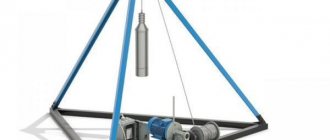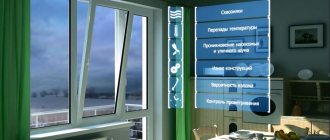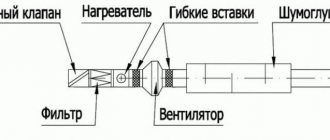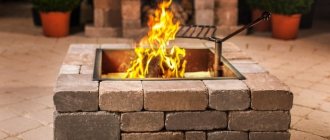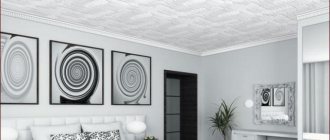Work associated with the formation of dust, the release of toxic gases, and fumes requires the installation of an exhaust system in the workplace and room. In most cases, do-it-yourself ventilation in the workshop is the most affordable way to solve the problem.
There are various options for constructing air exchange systems. We will help you navigate their diversity and consider the features of building ventilation for each type of workshop. Let's look at the most effective and affordable options for self-installation.
Types of ventilation systems in the workshop
Based on the method of air circulation in the room, there are two main types of ventilation:
- natural;
- forced.
In the first case, air movement occurs due to the temperature difference between indoors and outdoors.
And in the second, circulation is provided by fans that create excess pressure or vacuum in the workshop. This type of ventilation is also called mechanical.
Quick removal of contaminated air from the workshop is impossible without mechanical ventilation. But this does not mean that natural exhaust is not used in such rooms; they often complement each other
In turn, forced is of the following types:
- exhaust;
- supply;
- combined.
Exhaust ventilation ensures the removal of harmful gases and vapors, while clean air enters the workshop naturally. The supply air , on the contrary, creates excess pressure inside the room due to the intake of street air, and the exhaust air is squeezed out of the workshop through natural openings and cracks. If necessary, the input stream can be heated, cleaned, or humidified.
The combined workshop ventilation system is called supply and exhaust. Depending on the relative position of the air supply and removal channels, circulation can occur by displacement or mixing.
If the supply fans are located at the bottom, then the cold air rises and displaces warmer air. When the inlet channel is located at the top, the cold flow is distributed throughout the room, going down and mixing with the warmer one. The exhaust air is then removed through an exhaust duct.
Depending on the method of organization, ventilation in the workshop is divided into two types:
- local;
- centralized.
The first is used to remove harmful substances directly from the workplace. It is advantageous to use it to localize contamination when pieces of equipment are located far from each other throughout the entire area of the room.
Proper organization of the aspiration system eliminates explosive wood dust and preserves the health of workers. The centralized system is used for high intensity and continuous work in the workshop
For small workshops with a more compact arrangement of machines, it is advisable to install a centralized hood.
Hybrid ventilation options are also used , when some of the machines are connected to a common system, and some have local filtration. In some cases, in principle, preference is given only to local systems to prevent the spread of fine dust and other toxic substances throughout the workshop.
As a result…
DIY ventilation systems for the workshop are ready. Ventilation is a must in every professional workshop; it removes harmful fumes, poisonous gases, as well as dust and dirt that have settled in the air. Additionally, ventilation creates an air flow and displaces exhaust air from the room with new air from the street. I talked about three ways to create a homemade ventilation system for various purposes. What type to make for your needs is up to you to decide.
Question
Write in the comments why do you think dispersed dust is so dangerous for humans?
Features of ventilation in the workshop
Working in a workshop is associated with the presence of toxic and harmful substances in the air. The design and construction of ventilation in such premises depends on the type of work and the nature of the harmful factors.
Let's consider the main features that influence the configuration and parameters of ventilation systems for different types of workshops.
#1. Dust removal in a carpentry workshop
Fine dust is the main problem in woodworking workshops. Such a suspension of particles can remain in the air for 24 hours, although it is not noticeable to the eye, but is inhaled by the lungs. In addition, it settles on all surfaces. Whenever there is a draft or the engines of machines or tools are started, it ends up in the air again.
The organization of a dust removal (aspiration) system is complicated by the presence of a large number of dust sources and different fractions of chips. For this reason, it is necessary to connect suction hoses with individual filtration to each machine.
Dust removal systems operate on the principle of a cyclone. Polluted air is sucked in by the rotational movement of the fan and, under the influence of centrifugal force, heavier dust particles fall to the bottom of the container. Purified air rises. Additionally, the flow can be humidified for better cleaning
But, in addition to the harmful effects on breathing, wood dust also has fire and explosive properties. Which places increased demands on ventilation systems in terms of eliminating electrostatics and grounding structures.
#2. Air purification in a car service center
A car service workshop belongs to premises with increased air pollution. The constant presence of exhaust gases, carbon and nitrogen monoxide, aerosols, gasoline vapors, paint and other technical fluids places special demands on the performance of the ventilation system. The power of the supply and exhaust unit is selected with a reserve to ensure pumping of the entire volume of the room with the recommended multiplicity of 20 - 30.
In addition, contaminated air must be filtered and discharged through a pipe separate from the general ventilation.
#3. Ventilation of repair and forging workshops
The combustion products of electrodes, smoke, fumes and dust released during welding and metalworking operations when cutting and processing metal require removal using local exhaust hoods. What is regulated by GOST 12.3.003, SP 49.13330 , POT R M 020-2001 [22], STO 221 NOSTROY 2.10.64-2013 and safety rules for construction, installation, gas welding and electric welding work.
For manual electric welding, their approximate productivity is selected based on the provision of air exchange from 1500 to 4500 thousand m3*h/kg, divided by the weight of the electrodes burned in 1 hour.
With semi-automatic welding, the volume is increased to 1700 - 2000 thousand m3*h/kg.
Ventilation of the welder's workplace is of paramount importance. Vapors of metals and slag contain harmful manganese oxides, compounds of silicon, titanium and other chemical elements that lead to diseases of the nervous system, lungs, and can accumulate in the body
The general air circulation is distributed in an inflow to exhaust ratio of 1:3 for the upper tier, and 2:3 for the lower.
A feature of the ventilation of a forge workshop is the need to remove excess heat and toxic gases. For this purpose, local suction above the furnaces and natural ventilation are used.
When calculating the performance of ventilation systems for all types of workshops according to the recommended multiplicity, it is necessary to take into account heat losses during the cold season. Choosing the maximum parameters will guarantee the rapid removal of harmful substances, but at the same time, will require costs for heating the supply air. If heat recovery is not provided, it is better to opt for the lower permissible expansion limits.
No. 2 – Portable dust collecting unit UVP-1200P
Small-sized floor-mounted dust extractor for removing aerosols, dust, gases and other harmful emissions. The portable dust collection unit UVP-1200 is very convenient for mobile use on a construction site or in a workshop.
When removing dust, a filter can be installed at the fan outlet to prevent dust from entering the atmosphere.
| PRICE: 23,400 rub. | |
| Productivity, m³/h | 1200 |
| Number and ø of air ducts, mm | 1x125 |
| power, kWt | 1.1 |
Options for building ventilation in the workshop
In searching for the best ways to build ventilation for your own workshop, you have to review many possible options before finding the most suitable one.
To facilitate this search, let us consider, as an example, the most successful, in our opinion, solutions for independently arranging ventilation in the workshop.
Option #1 - exhaust ventilation from plastic pipes
To implement this project, the following were used: a used centrifugal fan “snail” with a 2.2 kW electric motor, a 40-50 liter barrel with a neck corresponding to the inlet hole of the “snail”, sewer plastic pipes 110 mm.
A centrifugal fan, unlike an axial fan, creates more pressure. This allows you to build on its basis more extensive and ramified ventilation systems in the workshop
A few words about the material of the air ducts. The use of plastic sewer pipes for ventilation is a fairly popular option, primarily due to the price. They are several times cheaper than plastic and steel air ducts for ventilation.
But sewer pipes also have their disadvantages:
- they cannot be used in places where the temperature may exceed +60 degrees;
- they do not have an antistatic coating, so it is not advisable to use them for chip and dust removal systems;
- their diameters do not meet the standards of ventilation systems, which makes it difficult to interface with other equipment.
Despite these disadvantages, in most cases, sewer pipes are successfully used as air ducts. The considered option for constructing a ventilation system from scrap materials was no exception.
In this project, all the main components of the hood for the locksmith workshop were made by hand. Let us briefly describe the stages of the work done.
So, first a major overhaul and modification of the centrifugal fan was carried out. The modification concerned the inlet pipe. More precisely, due to its absence, it was necessary to make a new one from a small sealed barrel, the volume of which would allow the fan to reach the required speed of the vortex flow.
A side hole was made in the barrel and a piece of plastic pipe was glued in, taking into account aerodynamics, so that the inlet flow would go along the inner circumference of the barrel. Then an air duct made of plastic pipes was installed under the ceiling along the center along the entire workshop.
The barrel in this project plays the role of a receiver, which was created with the prospect of expanding the ventilation system by installing several inlet pipes
A centrifugal fan creates a powerful vortex flow in the barrel, ensuring rapid pumping of air throughout the entire system. Its strength is so great that it holds the saw blade of the angle grinder at the most distant inlet.
The parameters of the exhaust system were as follows:
- engine power 2.2 kW;
- fan speed 2800 rpm;
- productivity 1000 m3/h – 1500 m3/h;
- The time required to extract the entire volume of air from the workshop is 5 – 10 minutes.
The entire system has 6 supply holes closed with homemade adjustable plugs. They are made of standard plastic with cut-out slots in the lid, and the same slots in a movable metal plate, fixed on one axis. When they rotate mutually, the air flow is adjusted.
Option #2 - dust collector from a KAMAZ filter
Since factory dust removal systems are quite expensive, homemade dust collectors based on air filters from large trucks such as KamAZ, tractors or combines have become widespread.
By adding a fan to such a filter, you get a good air purifier that takes up minimal space and can be easily transported to any part of the workshop.
The performance of such a system is regulated by selecting the fan power. Such filters are capable of purifying air volumes from 500 to 1000 m3 per hour, depending on the type. They can be connected to fans with a capacity of up to 300 – 400 m3/h.
The dust collector can be hung from the ceiling. The fastening must allow the equipment to be periodically removed and cleaned. The best way to do this is with compressed air outside.
Assembling the air purifier is quite simple. To do this, you need to cut out the flange and attach a pin to the axis for the length of the filter. Next, glue the fan to the flange and screw the entire structure to the filter.
Due to their ease of manufacture and low cost, several of these filters can be made and significantly improve the air in the entire workshop.
Option #3 - aspiration system in a carpentry workshop
The main role in the proposed dust removal system is played by a factory chip ejector from JET. The cost of such equipment, depending on the parameters, is 15 – 40 thousand rubles. Most models have a fabric dust collector and a chip bag.
For this option, the best model JET DC-1200CK with a paper filter element in the form of a removable drum was chosen. It is equipped with a manual internal cleaning tool that allows you to remove major dust without removing the filter.
Ventilation pipes were selected to provide maximum protection against electrostatics and the least resistance to air flow. These requirements are best met by twisted pipes made of galvanized steel.
During their installation, the reliability of the electrical contact at the connection nodes was checked with a multimeter. If necessary, the contact was strengthened with two self-tapping screws on opposite sides. The entire pipeline was grounded. In addition, the joints were wrapped with aluminum tape for tightness.
Work in the workshop is organized in such a way that all workbenches and machines can be moved on wheels to the center of the room and connected to the exhaust corrugation as they are used. Thanks to this, the workshop remains almost perfectly clean and dust-free.
To reduce noise and dust, the exhaust unit was moved outside the workshop to the adjacent boiler room. The supply pipeline is laid through a hole in the wall under the ceiling. The inlet pipe is fixed to the ceiling in the middle part of the workshop. A two-meter corrugated pipe made of transparent plastic is put on it.
In addition to aspiration, air exchange in the carpentry workshop is ensured by supply and exhaust ventilation.
When starting to design a dust removal system, understand the basic concepts and terms
Before purchasing everything you need to install a new dust removal system, get acquainted with the main characteristics that you encounter when searching for equipment.
Static pressure, vacuum and resistance to air flow. In order for the system to move dust, sawdust and shavings, it is necessary to force the air in the pipelines and hoses to move. This is made possible by the pressure difference at opposite ends of the pipelines, called vacuum, which is measured in pascals, millimeters of mercury or inches. Excessively narrow pipes, sharp bends and corrugated hoses increase resistance and reduce air flow.
Suction capacity measured in cubic meters of air per hour or liters per minute. Pay attention to how the manifold manufacturer rates performance. It is often measured in a free state, when there is nothing connected to the manifold inlet that could create resistance and reduce the air flow rate. We recommend comparing similar models from different manufacturers based on this indicator. But from these characteristics it is impossible to find out how the collector will actually work after connecting to it a whole network of pipelines that create resistance to air movement. Pressure difference measurements better reflect the actual performance of the manifold with its associated piping and machines.
Riser - a vertical pipeline descending from the main air line or branch to the machine. The riser typically consists of a 45° tee, a 45° elbow, a vertical pipe, a valve, and a piece of corrugated hose to connect to the machine outlet. Sometimes the riser branches in two to connect two machines.
Air flow speed is the speed at which air, along with dust, sawdust and shavings, moves through the pipelines when the collector is running. The flow speed in the risers must be at least 20 m/s, and in the main line about 18 m/s.
Micron (abbreviated micron). This unit of measurement is used to indicate the size of the smallest particles, including dust. One micron is equal to one millionth of a meter.
No. 4 — Chip ejector UVP-2000S with two inputs
Execution of the aspiration unit UVP-2000S with two inputs. Thanks to the adapter for connecting flexible hoses to the vacuum cleaner, it is possible to connect several machines.
The UVP-2000S dust collector with a capacity of 2000 m³/hour is used to clean the air from wood chips and dust in workshops and premises.
| PRICE: RUB 29,700 | |
| Productivity, m³/h | 2000 |
| Number and ø of air ducts, mm | 1x100 (1x120) |
| power, kWt | 2.2 |
Machines for rotary drawing of metal
To implement the technology, the following types of machines are used:
- Pressing and rolling machines for rotary drawing of metal.
- Rotary forging machines.
- Round cutters.
On manual lathes, molding is performed by the muscular strength of the worker. Used to produce unique products or especially small series. For medium and large series, pressing and rolling (rolling) machines with numerical control are used. Hydraulic or electric drives, controlled by a controller according to a program loaded into the central CNC unit, allow precise control of the force and direction of the clamp, as well as the direction of movement of the roller, including the most complex curved trajectories
Such machines ensure absolute identity of products in a series, which is especially important for jet engine parts and other high-tech products
Scheme of forging on rotary machines
Rotary forging machines allow you to form conical-shaped products from pipes by crimping the pipe with a special tool - a forging die. The peculiarity and main advantage lies in the unique ability to produce products that have:
- the length is many times greater than the diameter.
- along the length, the diameter and opening angle of the cone can be repeatedly changed.
- knurling of stiffeners is required.
Round cutters
Circular cutters are designed for cutting rolled sheets into flat pieces in the shape of a circle or ellipse. Also used are both manual and electro-hydraulic.
No. 5 — Chip ejector UVP-2000K-FK2
Modification of the installation of a dust collector on a wheeled support. With a cartridge filter with a manual regeneration mechanism. Serves for simultaneous maintenance of one or two woodworking machines.
Chip ejectors UVP-2000K-FK2 (on a stand with four wheel supports) with a cartridge filter have a large filtration area, degree of purification and increased service life of filter elements (5000-6000 hours).
Filtration area - 27 m², storage volume - 0.2 m³.
| PRICE: 52,500 rub. | |
| Productivity, m³/h | 2000 |
| Number and ø of air ducts, mm | 1x160 |
| power, kWt | 2.2 |
No. 9 — Chip ejector UVP-5000-FK1
Model with a cartridge filter instead of bag filters. No regeneration mechanism. It is equipped with flexible air ducts 2000 mm long for each entrance.
The filtration area of this model is 81 m², three soft storage tanks have a total volume of 0.6 m³. The filter element of the model is a cartridge without a regeneration mechanism.
| PRICE: 108,000 rub. | |
| Productivity, m³/h | 5000 |
| Number and ø of air ducts, mm | 3x160 |
| power, kWt | 5.5 |
No. 3 – Chip vacuum cleaner PROMA OP-750
Designed to collect shavings and small sawdust that are formed during the processing of wooden blanks. There are wheels for free movement around the site.
The model is widely used in furniture shops and carpentry workshops.
| PRICE: RUB 18,996 | |
| Productivity, m³/h | 1500 |
| Number and ø of air ducts, mm | 1x100 |
| power, kWt | 0.75 |
No. 10 — Chip ejector UVP-7000
The UVP aspiration unit is used in woodworking, the production of furniture and plastic doors, windows, food products and in the repacking of bulk materials. The dust collector is equipped with four soft storage tanks with a total volume of 0.8 m³.
When processing materials with a high proportion of light fine fraction in the waste composition, it is recommended to use filters with an increased filtration area, type FK. UVP-7000 can be ordered in a modification with one of the cartridge filters.
The filtration area of the base model is 8.4 m²; The filtration area of models with a cartridge filter is 108 m².
| PRICE: RUB 79,600 | |
| Productivity, m³/h | 7000 |
| Number and ø of air ducts, mm | 4x160 |
| power, kWt | 5.5 |
See the full range of ventilation units for air purification in production here: Chip exhausters. To select equipment according to the required parameters, contact the managers: 8 (499) 130-73-27,
.
The importance of preliminary calculations
Ventilation of the shower is necessary if it is installed in a concrete building or in a wooden house. It prevents the negative impact of high humidity on the integrity of plumbing equipment and building materials.
It is necessary to follow SNiP standards, which will serve for the safe operation of the room in the future. Before equipping a room with ventilation with your own hands, you must have a drawing of the shower stall, as well as the dressing rooms available in the room.
Removing excess moisture helps increase the life of all metal plumbing fixtures and some building materials. For normal human well-being, humidity should not exceed 65%. If this indicator is too high, staying in the shower can negatively affect the health of its visitor.
SNiP standards introduce the concept of “air exchange rate”. It represents the ratio of the volume of air entering or leaving a room to the volume of the room itself. The minimum indicator according to SNiP is 50 m3/hour. For public showers – 75 m3/hour.
The minimum “air exchange rate” according to SNiP in a public shower is 75 m3/hour
No. 6 — Chip ejector UVP-2000U with floor cleaning function
Model with floor cleaning function for collecting wood, plastic shavings and dust. The UVP-2000U chip ejector is easy to move across the floor on wheel bearing supports.
The filtration area of the base model is 2.1 m²; The filtration area of models with a cartridge filter is 27 m².
| PRICE: 40,300 rub. | |
| Productivity, m³/h | 2000 |
| Number and ø of air ducts, mm | 1x80, 1x120, 1x160 |
| power, kWt | 2.2 |

